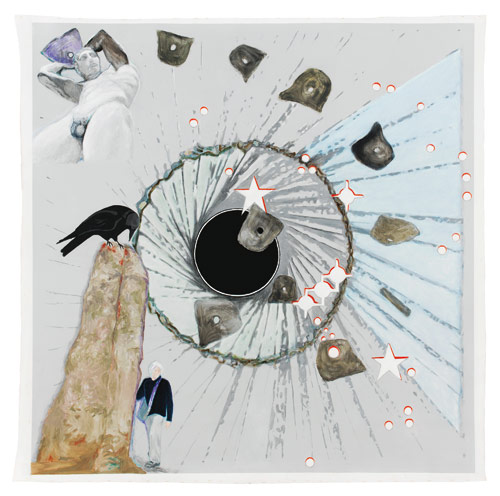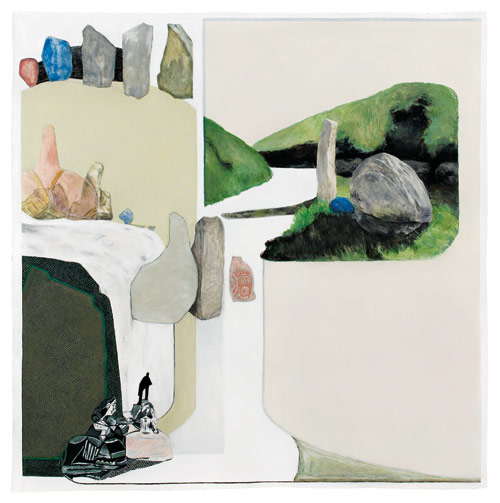2009-2013
Jo Baer
The six paintings presented by Jo Baer at the 31st Bienal all relate to a particular site in Ireland, where she lived in the early 1970s. Near Baer’s home there was a mysterious stone with a hole through its centre. Known as the Hurlstone, it was said by the locals to have been thrown there by a giant. This foundational myth leads Baer to gather and release on her canvases the twilit energies hidden in all kinds of objects and symbols, drawn from different times and places. Images are massed together, including self-portraits, Greek statues, animals and ancient religious structures. In one painting, they create a pictorial hole in time, in which old conflicts are reconciled, or at least put on hold. Christian and pagan symbols join forces in some paintings with skulls as well as Neolithic sculptures and carvings, in compositions that unsettle the gaze. Baer might refer to them as occupying a liminal zone, hovering between contrasting worlds and ideas.

Often there is an empty space in the images that gives room for the eye. This is possibly a reference to the artist’s own biography. Jo Baer was born in the USA and was one of the few female artists to be recognised within the Minimal art movement. In the 1970s, her canvases were often reflective white fields with lines or blocks of colour on the edges. At one point, she understood Minimalism to be a dead end, and turned to what she termed ‘radical figuration’. In these recent works, there seems to be a coming to terms with all aspects of her practice and indeed of her life as a wanderer – she moved from New York to Ireland and has been settled in Amsterdam for the last thirty years. Here, Baer paints apparently timeless images that recognise many legacies, yet defiantly create their own world out of many things that at first glance do not exist. – CE





